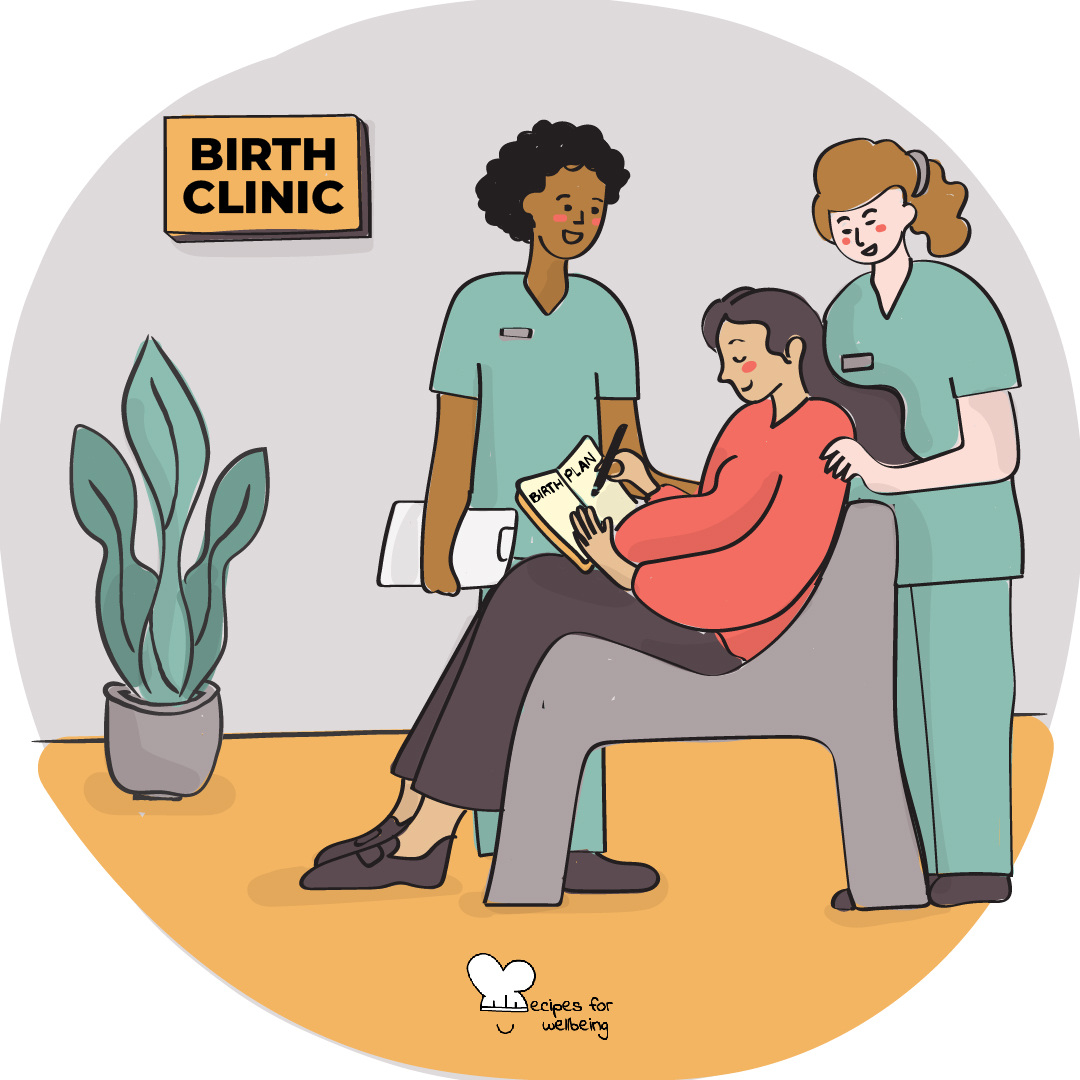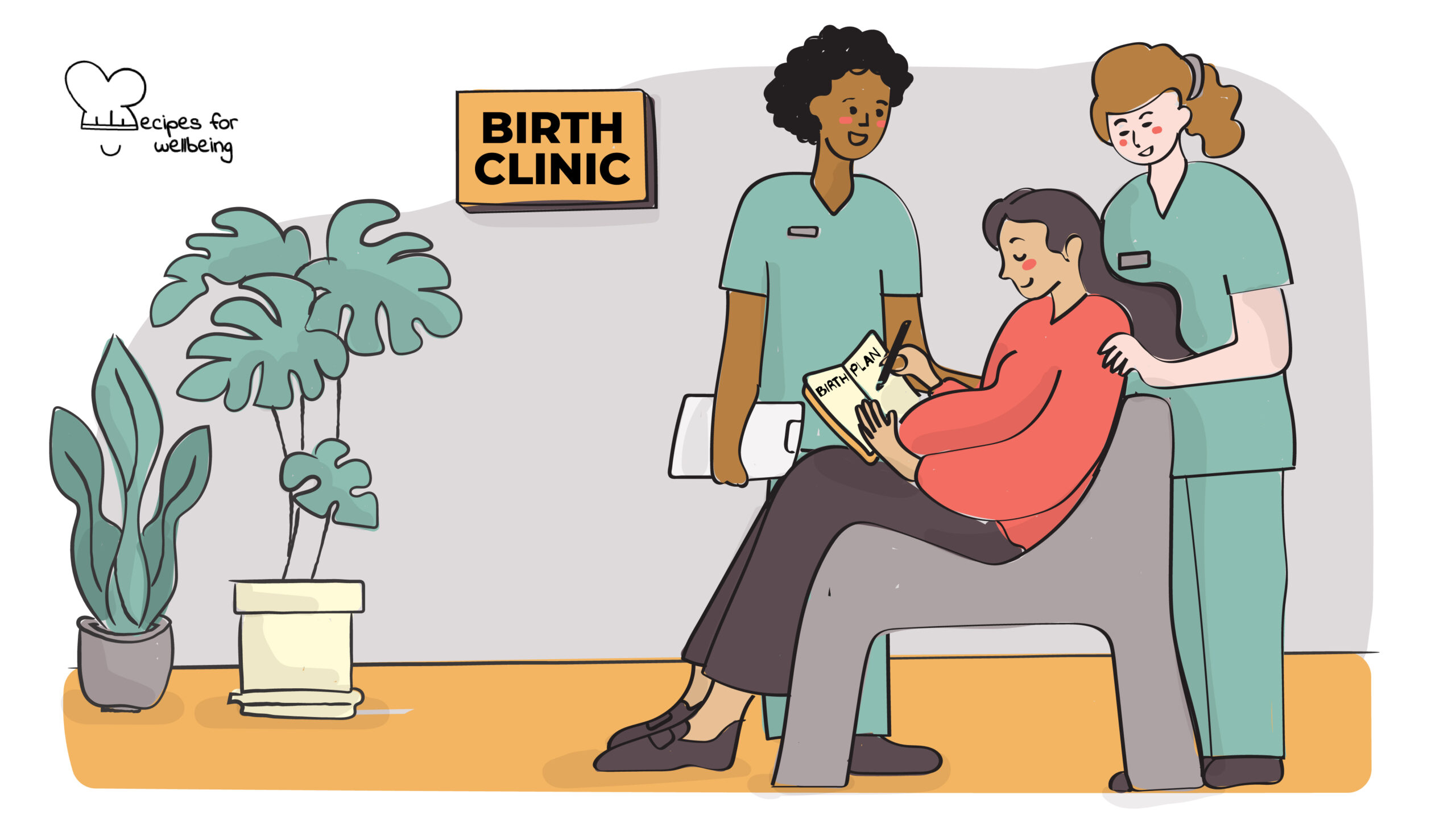
Crafting a birth plan
Telling women not to try to plan birth but instead to focus on the end result carries the underlying message that a woman in labour must ultimately sacrifice herself – her hopes, needs, desires, dignity or even her life – in order to save her baby. ―Milli Hill
 Serves: 1 person
Serves: 1 person
 Difficulty: Medium
Difficulty: Medium
 Total time: Ongoing
Total time: Ongoing
 Ingredients: Your midwife, obstetrician, and/or gynaecologist, your doula (if you have one), a birth plan template
Ingredients: Your midwife, obstetrician, and/or gynaecologist, your doula (if you have one), a birth plan template
 Wholebeing Domains: Accomplishments, Liberatory Learning, Positive Emotion
Wholebeing Domains: Accomplishments, Liberatory Learning, Positive Emotion
 Wholebeing Skills: Affirmation, Assertiveness, Autonomy, Contentment, Determination, Goal-setting, Planning
Wholebeing Skills: Affirmation, Assertiveness, Autonomy, Contentment, Determination, Goal-setting, Planning

Crafting a birth plan
 Description
Description
A tool to consider your many birth options and have care providers respect your choices.
As Milli Hill states in the book Give birth like a feminist, “birth is a really important experience in a woman’s life and it’s time to stop telling women that it’s ‘just one day’ in which they ‘leave their dignity at the door’ because a ‘healthy baby is all that matters’”. Women should be the key decision maker in the birth room.
This recipe guides you through some of the main elements to consider when you put together a birth plan. We advise you to create your birth plan with the support of your midwife, obstetrician, gynaecologist, and/or doula. There are many freely available templates online such as this one from the NHS or this one from ACOG.
Additionally, here are a few tips from Milli Hilli’s book to create a birth plan that reveals your choices so they may be respected in the birth room.
- Prepare a Plan A that sums up your hopes for your ideal birth. But also prepare contingency plans. In particular, be clear about what parts of your plan should go out of the window only in exceptional circumstances. This includes making a full plan for caesarean, whether you hope to have one or not. Research about ‘woman-centred caesarean’.
- Ask for what you want even if it is not what others want because there is only one person who can have this baby – you.
- Make a postnatal plan that describes how you wish the first hour after birth to be like, but also a separate postnatal plan to help you navigate the first few weeks with your baby.
- Ensure that everyone involved in your birth plan reads it in advance of your labour and signs it!
 Steps
Steps
Step 1 – Where to give birth
Not many people know, but women have the right to choose where to give birth. Depending on the unique circumstances of your pregnancy, you may be able to give birth in a hospital, in a birth centre, or at home. A birth centre is a maternity unit run by midwives, either part of a hospital or separate. Consult your midwife, obstetrician, or gynaecologist to find out what services are available locally and advise you on any issues related to your health or pregnancy that may affect your choice.
Step 2 – Choose a companion
It is also your right to have a companion who can support you during your labour and childbirth (as well as during a forceps, vacuum delivery, or caesarean section). When you have access to such trusted emotional and practical support, evidence shows that your experience of childbirth and the health outcomes can improve. This person could be a romantic partner, a parent, a doula, or a friend, for instance. You may also choose for your companion not to be with you during labour and childbirth.
Step 3 – Choose the right birthing equipment
There are a variety of items such as wall bars, mats, or beanbags that can help you remain comfortable during labour. Ask your midwife, obstetrician, or gynaecologist what is normally available so that you can plan accordingly (and possibly bring your own equipment).
Step 4 – Access special facilities
Some units may have special facilities available such as a birthing pool, but usually, availability is limited. Check with your midwife, obstetrician, or gynaecologist.
Step 5 – Monitoring during labour
During labour, your baby is monitored to ensure they are not in distress. There are different ways of monitoring their heartbeat so discuss your preferences with your midwife, obstetrician, or gynaecologist.
Step 6 – Keep active during labour
Keeping active during labour – as long as you feel comfortable – can support the progress of the birth. Again, discuss your preferences with your midwife, obstetrician, or gynaecologist.
Step 7 – Choose labour and birth positions
Try out various positions at antenatal classes or at home to find out which are the most comfortable for you. Let your midwife, obstetrician, or gynaecologist know if you prefer to be in bed with your back propped up by pillows, standing, sitting, kneeling, kneeling on all fours, squatting, lying on your side, or whether you are unsure about which positions you would like to be in during labour.
Step 8 – Skin-to-skin contact with your baby
You can choose to have your baby lifted straight onto you before the cord is cut or wait until the baby is cleaned and wrapped in a blanket. Share your preferences, if you have any.
Step 9 – Midwives, nurses, and doctors in training
You can share your thoughts about having midwives, nurses, and doctors in training with you during labour. This is a normal part of their training journey and they are always supervised by senior health professionals.
Step 10 – Pain relief options
Think about what pain relief options you may wish to use; knowing that you can use a combination of methods, from breathing and relaxation and massage to acupuncture and pain-relieving injections.
Step 11 – Having an episiotomy
In certain situations, an episiotomy (a cut in the perineum) might be necessary if the perineum doesn’t stretch enough or is at risk of tearing, or if the baby is short of oxygen and needs a faster birth. Discuss this with your midwife, obstetrician, or gynaecologist.
Step 12 – Giving birth to the placenta
After your baby is born, you are not quite done yet! You also have to give birth to your placenta. Discuss your options with your midwife, obstetrician, or gynaecologist.
Step 13 – Feeding your baby
You may be able to breastfeed your baby or choose to feed them infant formula as an alternative or a mixture of both. Share your preference in your birth plan.


 Arabic
Arabic Chinese (Simplified)
Chinese (Simplified) Dutch
Dutch English
English French
French German
German Italian
Italian Portuguese
Portuguese Russian
Russian Spanish
Spanish